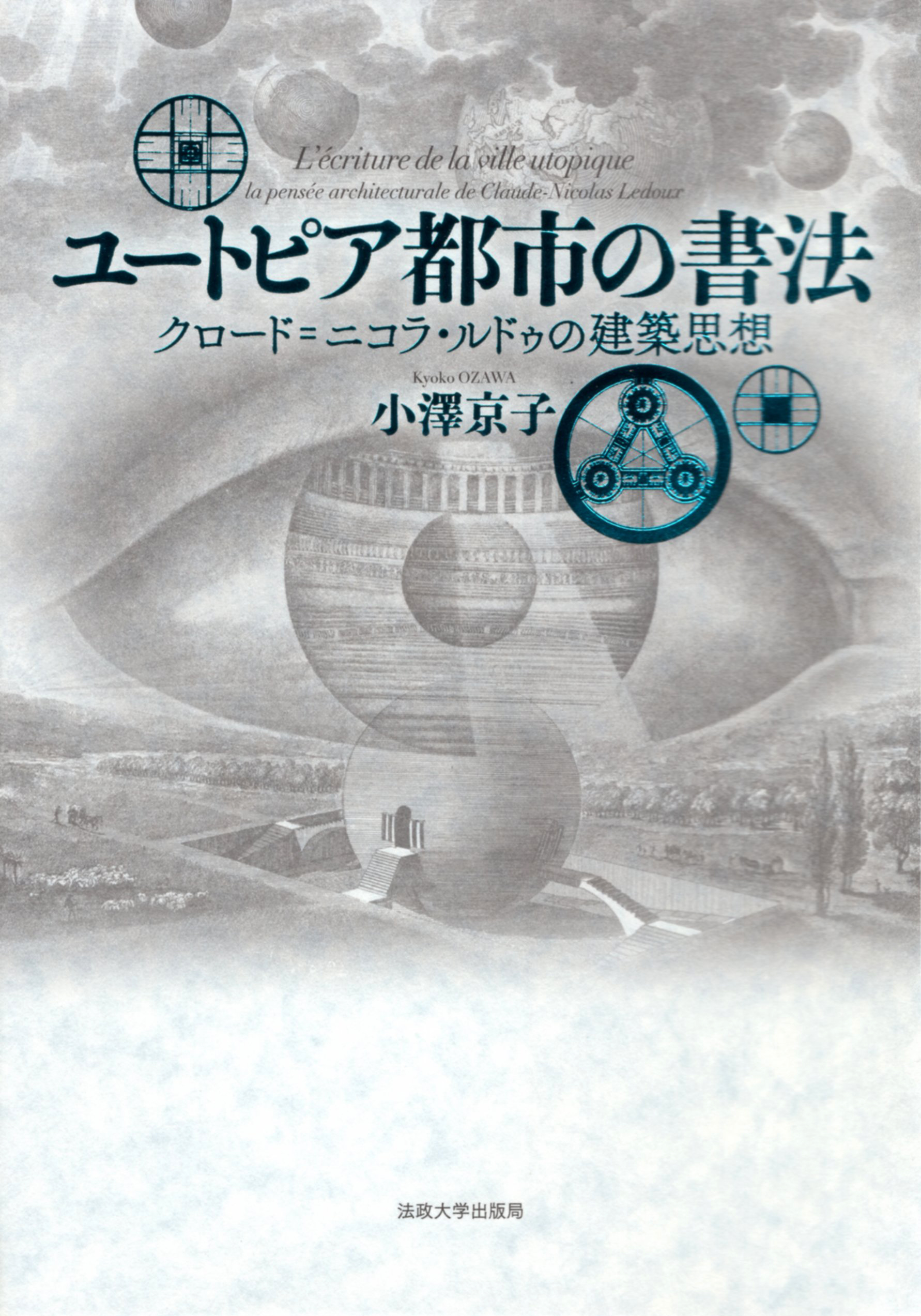
Title
Utopia Toshi no Shohō (The Writing of the Utopian City - Claude-Nicolas Ledoux’s Architectural Thought)
Size
286 pages, A5 format, hardcover
Language
Japanese
Released
July, 2017
ISBN
978-4-588-78609-9
Published by
Hosei University Press
Book Info
See Book Availability at Library
Japanese Page
A cemetery laid out like a celestial sphere, a house in the shape of a globe, the shape of an eye enclosing a theater, and a brothel with the outline of a penis when viewed from above. These were just some of the works envisioned by Claude-Nicolas Ledoux, a late eighteenth-century architect who lived through the Enlightenment, Neoclassicism and the French Revolution and who is the subject of this book.
In an era of absolute monarchy, Ledoux designed and built manor houses and public buildings. But when his working life as the “king’s architect” was cut short by the French Revolution, he turned to writing in an attempt to realize his dashed dreams. To this end, he poured his architectural passion into a book titled, L'Architecture considérée sous le rapport de l'art, des mœurs et de la législation (Architecture considered in relation to art, morals, and legislation). In this book, a traveler in a utopian city reports on both already existing and imaginary structures. Precise and orderly illustrations provide a stark contrast to the book’s disjointed and convoluted text. For Ledoux, it was itself a work of architecture and the embodiment of his ideal utopian city.
The era of the French Revolution encompassed a variety of “revolutions.” While Ledoux’s architectural vision seems eccentric on the one hand, on the other hand it is infused with both classical antiquity and early modern imagery—for example, the symbolism of a sphere, the correspondence between the great universe and the microcosm, the architect as creator—reflecting not only the diverse trends of thought prevalent at the time but also presaging a future soon to come.
In this book, Ledoux’s character is examined from four different perspectives: Language and script (Part 1), architectural space and physical control (Part 2), books as urban space and, within that context, the interaction of text and imagery (Part 3), and the demiurge image of an architect’s self-expression as a creator (Part 4).
The end of the eighteenth century saw the emergence and reinforcement of a concept in which buildings were designed to impose control over the human body and sexuality. Ledoux writes of how efficient control can be achieved with a system of surveillance emanating from the center of a circle and of how youths can be guided in their sexual ethics by certain types of buildings. Similar ideas were developed by Ledoux’s contemporaries, such as the utilitarian Jeremy Bentham who designed the panopticon, which allows a single security guard to keep an eye on all the inmates of a prison; the French novelist Restif de la Bretonne who, in Le Pornographe (1769), promoted the concept of a community based on regulated prostitution; and the Marquis de Sade who had an obsessive fascination for buildings of “sexual training.”
Ledoux’s creativity is not restricted to buildings and cities, or even to books, but rather is a “language” in and of itself. In the process of examining his “orthography of the utopian city,” this book seeks to uncover the perceptions and desires of the era just before and after the French Revolution.
(Written by: OZAWA Kyoko / December 22, 2020)



